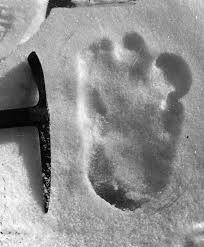A Yeti Is Just a Yeti Unless It’s Really a …
The search for the Yeti took a step backwards last month. Daniel Taylor, whose interest in the Yeti was sparked by the infamous 1951 photograph by Eric Shipton, spent 60 years searching for the creature that made the 13-inch imprint in the snow all those years ago. Taylor’s new book, Yeti: The Ecology of a Mystery, provides a new—yet believable—answer to the question: Where have all the Yeti’s gone?
People are fascinated with Yetis, Bigfoots (North American version), and Sasquatches (Canadian version). This is merely semantics since all of these names refer to the same creature. “Yeti” is the Himalayan variety. It’s also called the Abominable Snowman, since it is sighted in snow-covered areas. While setting up foundations protecting the environments they may inhabit, Taylor dedicated his life to locating these humanoid creatures.
DNA testing was attempted to identify this new animal/beast/creature of the snow. It was initially incomplete and abandoned when the researchers learned there was a link with bears. I suspect that since the initial findings didn’t fit with their theory, they dismissed the sample as contaminated. That’s unfortunate. New analysis was completed and the results conclusive.
Nearly every culture has a large, hybrid man/animal creature story. Usually these creatures are classified ape-man, denoting the bipedal mobility of the creatures. One possibility that hasn’t gotten much attention: bears that walk on 2 legs. Until now.
Himalayan Brown Bears, also called tree bears or vegetarian bears (they predominantly eat fruit and are actually omnivores), live in isolated areas in India, Nepal, Pakistan, and Tibet and walk on two legs. The hair samples that were analyzed came back belonging to these bears.
This doesn’t end the debate on whether the Yeti exists. It merely means that the evidence found doesn’t belong to a Yeti. Keep searching—but remain respectful.
Taylor’s book is getting positive reviews. Check it out.

